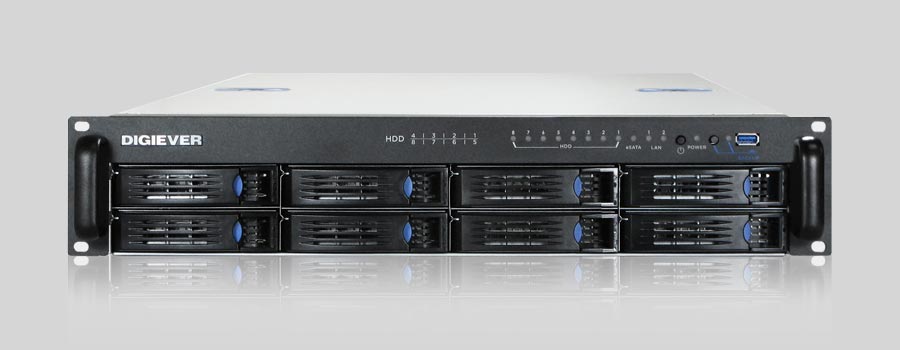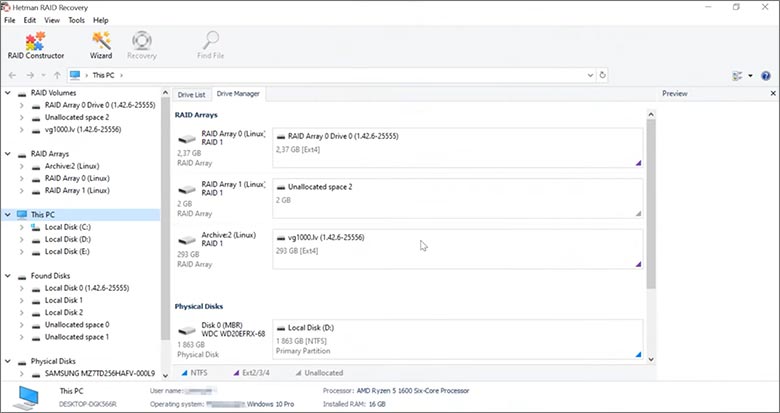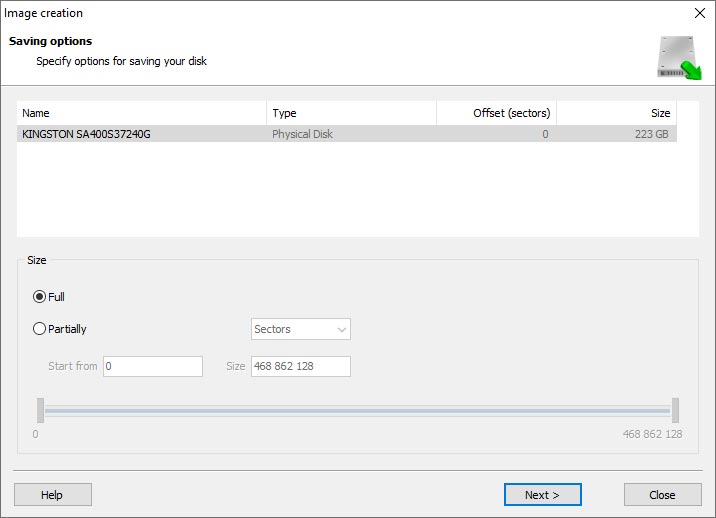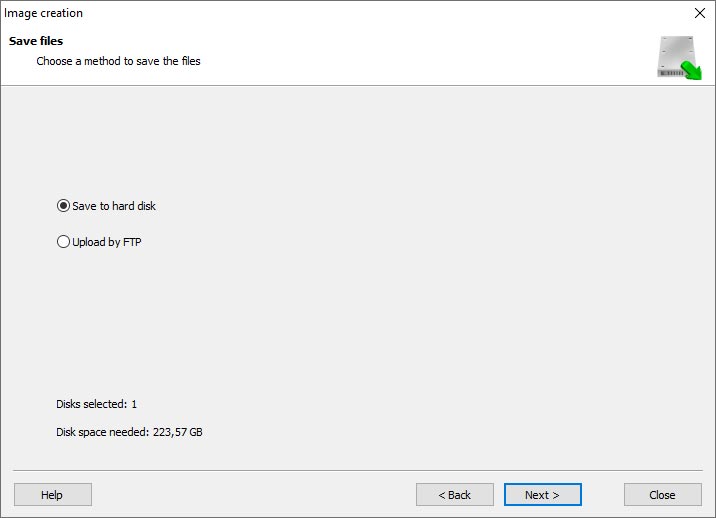
- Why Regular Data Recovery Tools Can’t Restore Files from RAID
- Key Information About the NAS Digiever DS-8580-SRM Pro+
- How to Remove Hard Disks from Your NAS and Connect Them to a PC
Why Regular Data Recovery Tools Can’t Restore Files from RAID
Conventional hard drives store user data by writing it sequentially across the disk surface, which means an entire file is typically located on a single drive. In contrast, when data is written to a RAID array, each file is split into multiple fragments. These fragments are then distributed and written in sequence across all the drives in the array. Depending on the configuration, fragment sizes can range from 2 KB to 2 MB, so every file is physically stored across several disks at once.
This approach significantly increases read and write performance — after all, writing two halves of a 1 GB file to two drives simultaneously is much faster than writing the full 1 GB to a single disk. However, this same mechanism makes file recovery far more complex.
Different RAID levels use different methods to distribute and protect data. On top of that, manufacturers like Digiever often add their own proprietary structures and variations. As a result, data can be written to disks in many different formats, and each requires a specific approach during recovery.
How can regular performance monitoring and optimization help in preventing data loss on NAS Digiever DS-8580-SRM Pro+ devices?
Regular performance monitoring and optimization can help in preventing data loss on NAS Digiever DS-8580-SRM Pro+ devices in the following ways:
- Early detection of issues: Regular monitoring allows you to identify potential performance issues or bottlenecks in the NAS system. By monitoring system metrics such as CPU usage, memory utilization, disk I/O, and network traffic, you can catch any anomalies or signs of system degradation early on. This helps in preventing any unexpected failures or data loss.
- Capacity planning: Monitoring the storage capacity utilization helps in identifying when the storage is nearing its limit. By monitoring the available storage space and growth trends, you can plan for additional storage in advance, preventing the NAS from running out of space and potentially causing data loss.
- RAID health monitoring: NAS devices like Digiever DS-8580-SRM Pro+ often use RAID configurations for data redundancy and protection. Regular monitoring of RAID health, including disk status, array integrity, and rebuild progress, ensures that any potential issues are detected promptly. This helps in preventing data loss due to disk failures or RAID degradation.
- Backup verification: Monitoring the status and success of regular backups is crucial for data protection. Regularly verifying the integrity and completeness of backups ensures that the data is properly backed up and can be restored in case of data loss or system failure.
- Performance optimization: Regular monitoring helps in identifying performance bottlenecks and optimizing the NAS system for better performance. By analyzing the system metrics and identifying areas of improvement, you can optimize resource allocation, network configurations, and storage settings. This helps in preventing performance-related issues that could lead to data loss.
Overall, regular performance monitoring and optimization provide proactive measures to identify and address potential issues, ensuring the reliability, performance, and data integrity of the NAS Digiever DS-8580-SRM Pro+ devices.
How to Remove Hard Disks from Your NAS and Connect Them to a PC
Although the NAS DS-8580-SRM Pro+ can be accessed over the network, you still need to remove its hard disks and connect them directly to a Windows PC. Only then can the recovery software properly scan and analyze the drives. Follow these steps:
-
Power off the NAS and disconnect it from the power source.
WARNING! Before removing any drives, carefully read the device manual. Improper actions may damage both the NAS enclosure and the hard disks in the RAID array.
-
Remove the hard disks one by one, gently sliding each drive out of its slot. Remember that hard disks are highly sensitive: any impact or drop can cause serious physical damage.
-
Label each hard disk according to its position inside the NAS. The order of the drives is crucial for correct RAID reconstruction.
-
Connect the drives to your computer. In this video, we explain which ports you can use to connect hard disks and what to do if your PC does not have enough free connectors.
Go to view
Step-by-Step Data Recovery with Hetman RAID Recovery

This program restores data from damaged RAID arrays and is fully compatible with Digiever DS-8580-SRM Pro+. Each hard disk in the array contains technical metadata describing how files were written. When launched, Hetman RAID Recovery analyzes this metadata, automatically reconstructs the damaged array, and provides access to its contents. After that, you can browse the recovered disk and save your files. The program can also restore files that were accidentally deleted from the network drive.

How to recover data from a Digiever
DS-8580-SRM Pro+ has 8 HDD slots, and it supports the following array types:
- RAID 0;
- RAID 1;
- RAID 5;
- RAID 6;
- RAID 50;
- RAID 60;
- JBOD;
NAS supports:
- exFAT, VFAT, FAT 12 / 16 / 32;
- NTFS / ReFS;
- APFS / HFS+;
- Ext2 / 3 / 4 / ReiserFS / XFS / UFS / ZFS / Btrfs;
- VMFS / HikvisionFS;
How to Safely Recover Data from Disk Images
This utility allows you to create a complete copy of a disk and work with the disk image instead of the physical drive. This approach helps protect your data from:
- Overwriting during the recovery process;
- Additional data loss caused by bad sectors;
- User errors.
To create a disk image, follow these steps:
-
Ensure you have enough free space to store the image. Its size will typically match the size of the original disk.
-
In the main window, select the target disk and choose Tools - Save Disk. You can also select multiple disks if needed.
-
When the Image Creation Wizard opens, select whether you want to save the entire disk or only a specific region. Adjust the settings and click Next.

-
Choose the directory where the image will be saved. You may select any available disk connected to your PC or upload the image via FTP.

Where Are the User’s Files Actually Stored?
The Digiever DS-8580-SRM Pro+ network-attached storage keeps OS Linux operating system files on a separate RAID 1 (mirrored) array. Usually, all NAS systems create several volumes on every hard disk, and the first of them takes up to 2 Gb of space. This is where operating system files are stored. Other volumes are united into a RAID array where user’s data is written.
RAID Recovery Software: Detailed Comparison
| Product | Operating system | RAID controller support | Supported file systems | Virtual RAID controller support | Data recovery from damaged RAID | File preview |
|---|---|---|---|---|---|---|
| Hetman RAID Recovery | Windows, Linux, MacOS | Yes, over 100 controllers | FAT, exFAT, NTFS, ReFS, APFS, HFS+, Ext4, Ext3, Ext2, ReiserFS, Btrfs, VMFS, Hikvision, XFS, UFS, ZFS | Yes | Yes | Yes |
| DiskInternals RAID Recovery | Windows | Yes, over 10 controllers | FAT, NTFS, Ext2/3/4, HFS+ | No | Yes | Yes |
| R-Studio | Windows, Mac, Linux | Yes, over 20 controllers | FAT, NTFS, Ext2/3/4, HFS+ | Yes | Yes | Yes |
| UFS Explorer RAID Recovery | Windows, Mac, Linux | Yes, over 100 controllers | FAT, NTFS, Ext2/3/4, HFS+ | Yes | Yes | Yes |
| EaseUS Data Recovery | Windows | Yes, over 20 controllers | FAT, NTFS, Ext2/3/4, HFS+ | No | Yes | Yes |
| ReclaiMe Free RAID Recovery | Windows | Yes, over 100 controllers | FAT, NTFS, Ext2/3/4, HFS+ | Yes | Yes | Yes |




Yes, it is highly recommended to have a backup of the data on the NAS Digiever DS-8580-SRM Pro+ before attempting any data recovery. This is because data recovery processes can sometimes be complex and there is a risk of further data loss or damage during the recovery process. Having a backup ensures that even if something goes wrong during the recovery attempt, you still have a copy of your data that can be restored. It is always best practice to regularly backup important data to prevent data loss situations.